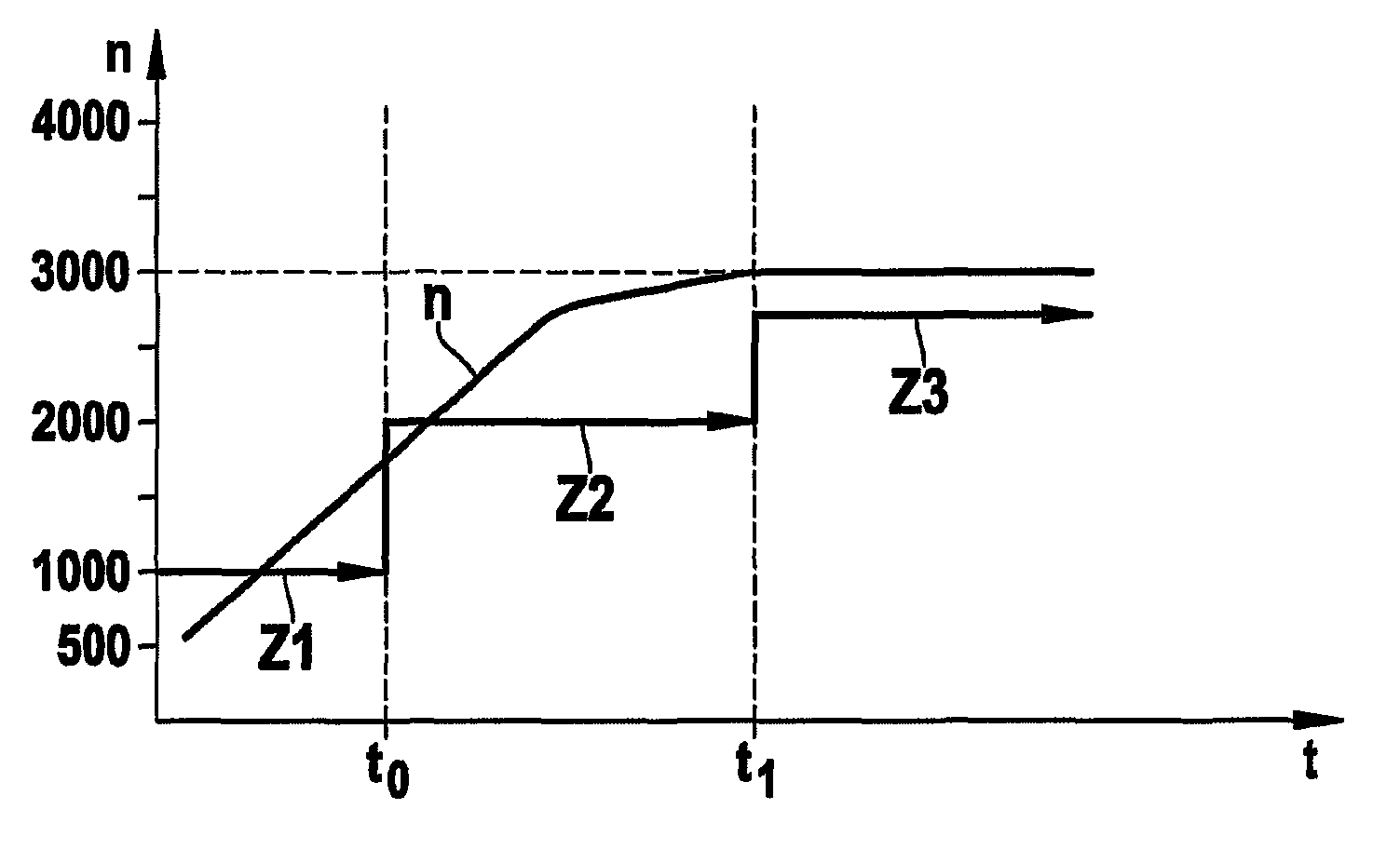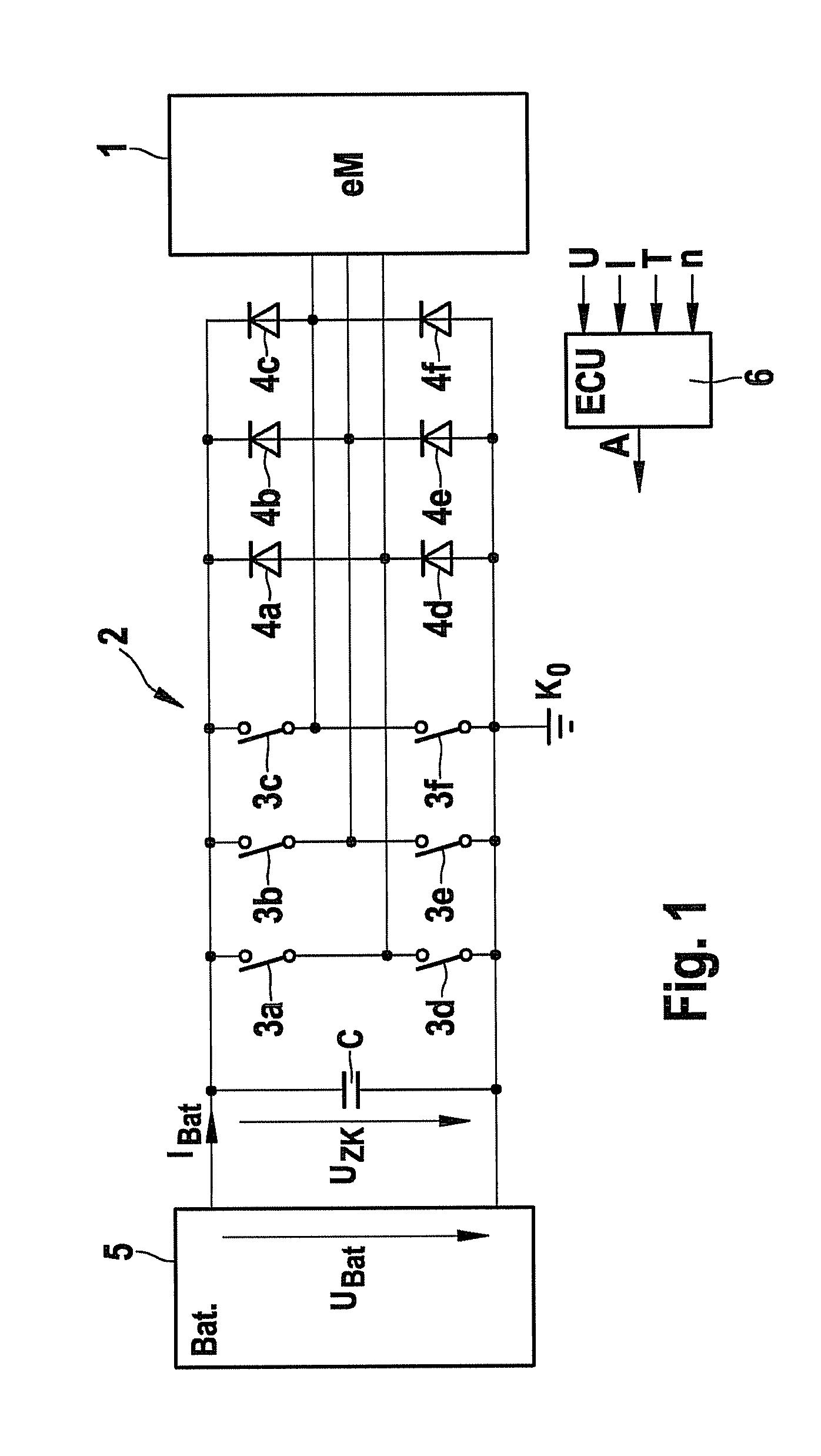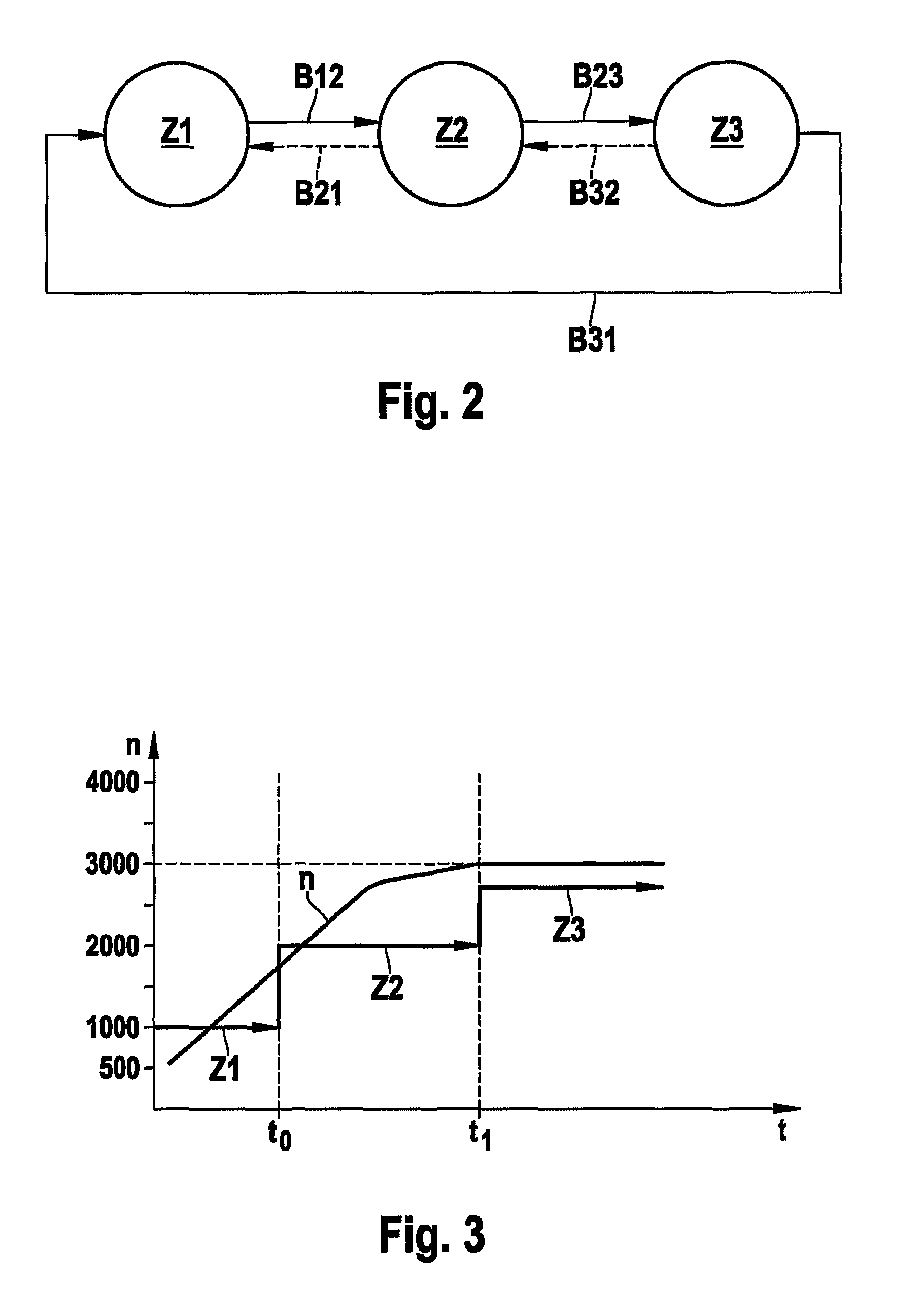Method for shutting down an electric machine in the event of a malfunction
a technology of electric machines and devices, applied in the direction of motor/generator/converter stoppers, dynamo-electric converter control, etc., can solve the problems of increased d.c. link voltage by 50 v or more, sudden change in machine torque, etc., to achieve less heating of electric machines, less side effects, and less effect on machine torqu
- Summary
- Abstract
- Description
- Claims
- Application Information
AI Technical Summary
Benefits of technology
Problems solved by technology
Method used
Image
Examples
Embodiment Construction
[0017]FIG. 1 shows a schematic diagram of an electric machine 1 having a pulse-controlled inverter 2 connected thereto. Pulse-controlled inverter (PCI) 2 includes several switches 3a-3f, which are connected to individual phases U, V, W of electric machine 1 and switch phases U, V, W are connected either to a high power supply potential (battery voltage UBat) or a low reference potential (ground). Switches 3a-3c connected to high power supply potential UBat are referred to as “high-side switches” and switches 3d-3f which are connected to ground are referred to as “low-side switches.” Pulse-controlled inverter 2 also includes several freewheeling diodes 4a-4f which are configured in the form of a six-pulse rectifier bridge circuit. One of each diode 4a-4f is connected in parallel to one of switches 3a-3f.
[0018]PCI 2 determines the power and operating mode of electric machine 1 and is triggered accordingly by a control unit 6. Electric machine 1 may thus be operated optionally in moto...
PUM
 Login to View More
Login to View More Abstract
Description
Claims
Application Information
 Login to View More
Login to View More - R&D
- Intellectual Property
- Life Sciences
- Materials
- Tech Scout
- Unparalleled Data Quality
- Higher Quality Content
- 60% Fewer Hallucinations
Browse by: Latest US Patents, China's latest patents, Technical Efficacy Thesaurus, Application Domain, Technology Topic, Popular Technical Reports.
© 2025 PatSnap. All rights reserved.Legal|Privacy policy|Modern Slavery Act Transparency Statement|Sitemap|About US| Contact US: help@patsnap.com



